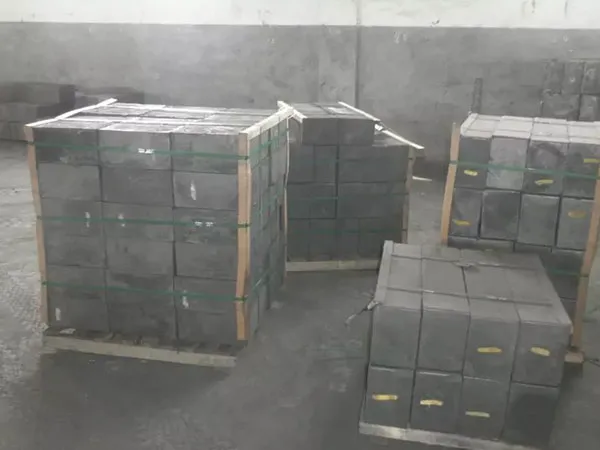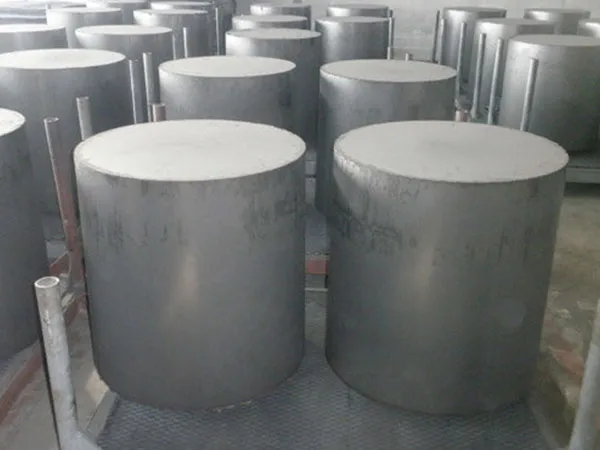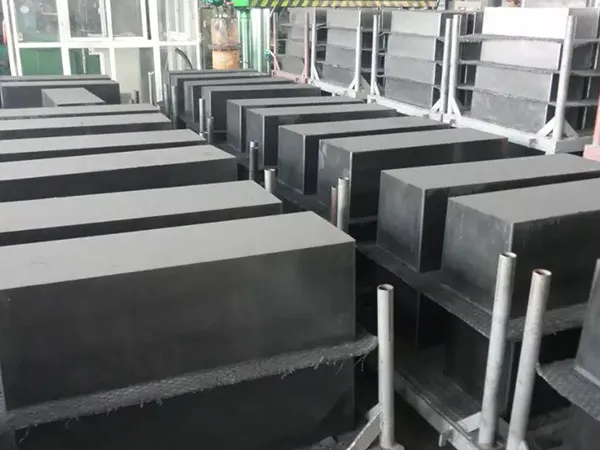Time: 2025-06-12 07:12:25 Source: Cangzhou Carbon Technology Co., Ltd.
The graphite stands out for its exceptional properties, including high thermal and electrical conductivity, excellent thermal shock resistance, and chemical inertness. Within the realm of synthetic graphite, two prominent types are die-molded graphite and isostatic graphite. While both are manufactured from carbonaceous raw materials and undergo high-temperature processing to achieve their graphitic structure, their fundamental difference lies in their shaping process, which profoundly impacts their resulting material properties and suitability for diverse applications.

Die-Molded Graphite:
Produced by compressing a mixture of graphite powder and a binder into a mold using uniaxial (single-direction) or sometimes bidirectional pressure.
This process can involve "pressed to size" (PTS) technology, allowing for near-net-shape production, which can be cost-effective for high-volume, complex parts.Can be done via cold or hot molding.
Isostatic Graphite:
Manufactured using a cold isostatic pressing (CIP) process.
The raw material mixture is placed in a flexible mold and subjected to uniform, high pressure from all directions by a fluid medium (liquid or gas) in a sealed chamber. This is based on Pascal's law, ensuring even compression.
This method is generally considered more advanced and can also include warm or hot isostatic pressing.

Die-Molded Graphite:
Anisotropic properties: Its characteristics (strength, thermal conductivity, electrical conductivity) can vary depending on the direction of measurement, particularly if formed by extrusion (which is a form of molding through a die). Some die-molded graphites can also show high anisotropy due to the axial forming process.
Can have a fine to ultrafine granulation.
Properties can be adjusted for specific tribological or electrical needs.
Isostatic Graphite:
Isotropic properties: This is the most significant difference. Due to the uniform pressure from all directions during manufacturing, isostatic graphite exhibits consistent properties (strength, density, thermal and electrical conductivity, thermal expansion) in all directions.
Generally has the smallest grain sizes among synthetic graphites, often ultra-fine.
Typically boasts higher density, strength, and thermal shock resistance compared to other graphite types.
Often has a very low impurity content (e.g., < 5 ppm), making it suitable for high-purity applications.
Increased strength with rising temperature (up to a certain point).
Can be machined to very high precision.

Die-Molded Graphite:
Often used for cost-effective applications where anisotropic properties are acceptable or even desired.
Common in mechanical engineering and automotive applications where low wear, long-term stability, and adjustable expansion behavior are important.
Can be used for electrodes, crucibles, and general industrial uses where uniform performance is less critical.
Suitable for continuous casting dies and molds.
Isostatic Graphite:
Preferred for high-performance, precision-driven applications where uniform and consistent properties are crucial.
Widely used in semiconductor manufacturing (e.g., for hot zone components in crystal growth furnaces), aerospace components (due to high strength and thermal stability), and nuclear applications.

Excellent for high-performance graphite furnaces, EDM (electrical discharge machining) electrodes, and continuous casting where high dimensional accuracy and surface quality are needed.
Used in solar (photovoltaic) industries, chemical industries (heat exchangers, corrosion-resistant parts), and metallurgy.
In essence, while both are synthetic graphite materials, isostatic graphite is characterized by its superior uniformity, finer grain size, and higher overall performance due to its unique manufacturing process, making it ideal for demanding, high-precision applications. Die-molded graphite offers a wider range of tailored properties and can be more cost-effective for certain applications.